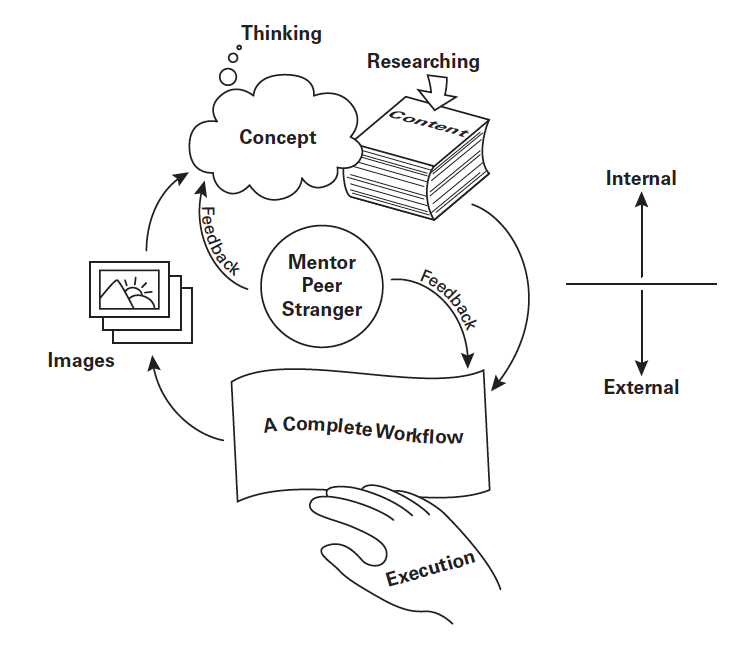How to Make Your Student Work Hard?
Working hard is the essence of success; you and I know it and no student would object to it. Knowing it and doing it, however, are quite different. Our culture of instant gratification dissuades students from prolonged investment of effort, something we know is required if great ideas are going to come to fruition. How do we undo this zeitgeist-induced damage in our classrooms?
The solution to this question, provided by Photography: A 21st Century Practice, is to redefine hard work as a tangible method, not just an austere work ethic. An illustration in Chapter 10: Development and Presentation visualizes hard work as repetitions of the project production loop:
In the upper part of the loop, thinking shapes the concept and research sets the foundation for the content. Mentors and peers, sitting at the axis of the loop, fuel thinking and researching through brainstorming. These activities, internal and not product-producing, must then be externalized through a complete production workflow, in the bottom half of this loop.
As the student churns out images from their workflow, mentors and peers review them and give feedback in the forms of critiques to the student. This feedback is the images’ initial audience testing and becomes food for thought and new direction for research for the next round of production loop.
It goes without saying that the more times a student can loop this loop, the more productivity and learning a student can achieve. And there: with this method, we’ve asked students to work hard, without mentioning either the word work, or hard. Now, why don’t we tap into the mechanism of instant gratification, stimulating the students’ dopamine release by giving them a reward every time they reach out to you for extra feedback, for example, by announcing achievements to the class or offering bonus points?
All successful artists know to invest persistent effort to achieve a goal in the future and the production loop trains aspiring artists in this vital skill.
Would you like to receive a free educator’s examination copy of Photography: A 21st Century Practice, so you may check out this and many other teaching tips? Just ask by writing to me. You may also visit Photo21c.com for our supplementary materials in addition to the book.
